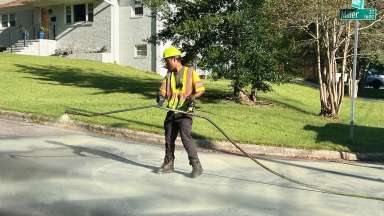This summer, the City of Raleigh is starting its 2025 Pavement Rejuvenation Program. The program helps streets last longer, saves tax dollars, and is better for the environment. Now in its fifth year, it uses a treatment called a pavement rejuvenator—a liquid sprayed onto asphalt that soaks in, restores flexibility, and slows the natural wear-and-tear of the road.
“It’s a low-cost treatment that can add 5 to 8 more years of life to our streets,” said Ben Griffin, Street Maintenance Division Manager. “That means we’re getting more value out of the roads we’ve already built.”

